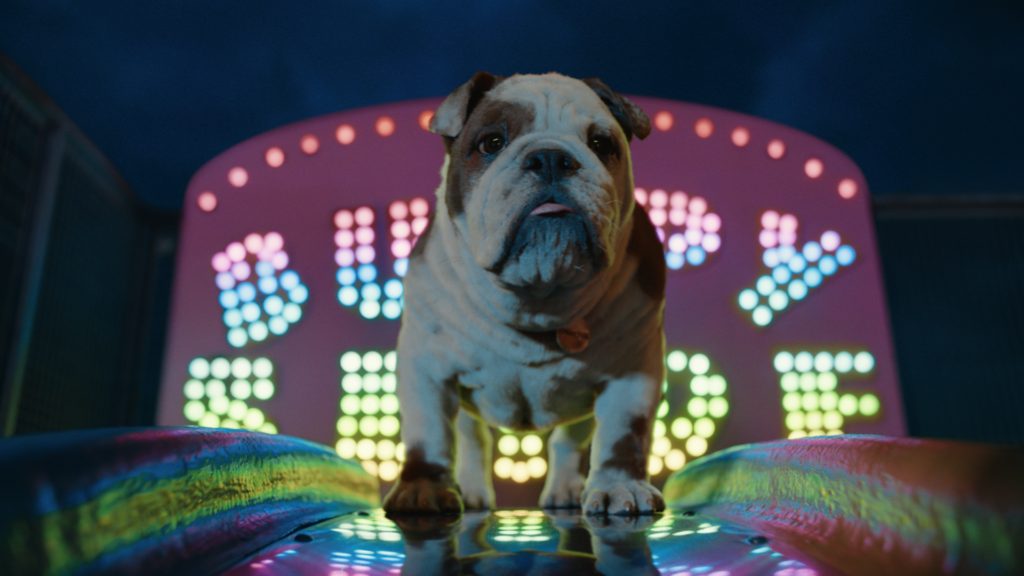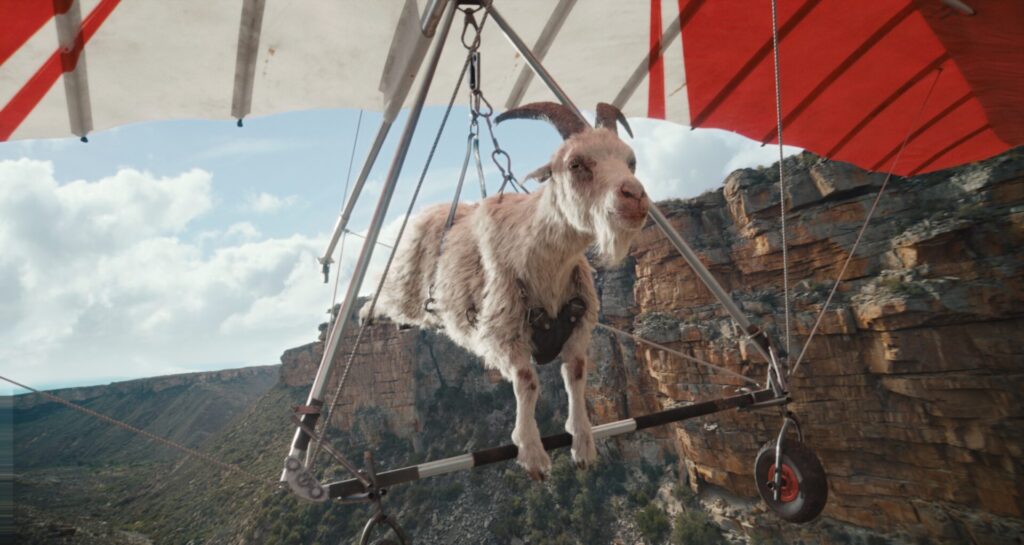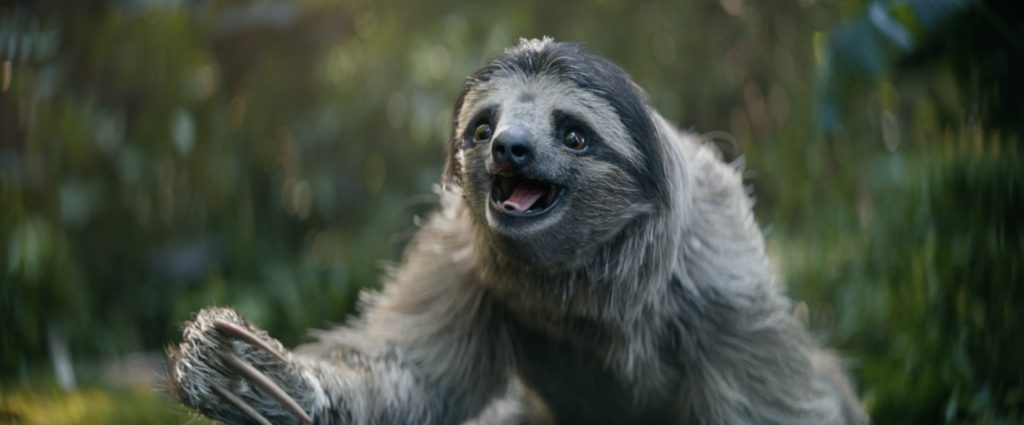
Innovation runs in Untold Studios’ DNA. The world’s first fully cloud-based creative studio strives to provide an environment where happy accidents are welcome, even encouraged. This ethos has helped the company attract diverse talent and break new ground in animation and visual effects (VFX). Since launching in 2018, the studio set out to deliver world-class work across music, film, television, and advertising, a feat it has achieved with an eye toward the future. Leveraging the scalability of the cloud and collaboration enabled by Autodesk’s Design and Make software, Untold Studios has been able to tap into the world’s best talent and streamline the flow of information across projects, teams, and the studio – a paramount task as projects have expanded in size and complexity. In just five years, the company has grown an international team of 16 to more than 240, earned BAFTA, EMMY, and GRAMMY nominations, and driven next-gen workflows.
Amaan Akram, head of VFX, Untold Studios, attributes this success, in part, to a robust cloud-based technology pipeline built in collaboration with industry-leading technology companies like Autodesk. He shares, “We build everything with the future in mind and carefully consider the technologies and vendors we engage with. Our work with Autodesk and its Design and Make software have proven integral to our continued evolution, helping us to push the boundaries of technology to achieve outcomes previously thought impossible.”
Envisioning a powerful pipeline in the cloud
Untold Studios built its creative pipeline to support a range of third-party technologies in the cloud, including Autodesk Maya for character animation, Autodesk Flame for commercial finishing, and Autodesk Arnold for scalable rendering, with Autodesk Flow Production Tracking (formerly ShotGrid) for production management, tying everything together. Its virtual setup lets remote artists start up their cloud machines, and log in via a proprietary web interface to start working in the application most relevant to their job, be it visual effects, design, creative finishing, or another creative endeavor.
As artists complete their work, seamless communication with other team members and project stakeholders across the studio is crucial, which is why Akram notes that many of the studio’s daily tasks are fed through Flow Production Tracking (formerly ShotGrid). Its production management and review toolset gives everyone on the team insight into what’s happening on each project and across the studio. Flow Production Tracking is also set up to communicate or exchange data with external vendors. They can drop data into an Amazon Simple Storage Service (Amazon S3) bucket, the information is automatically input into Flow Production Tracking, and the team is alerted.
“Flow Production Tracking (formerly ShotGrid) is the glue that holds our team together. It’s our main production tracking solution for VFX and ties into our asset management pipeline; we can also conveniently communicate with it from all our digital content creation (DCC) applications, including Maya, Flame, Houdini, Nuke, and even our render farm,” explains Akram. “It’s given us a streamlined way to track what’s happening across projects from ingest through final delivery while also making it easier to share content across the business, to maximize collaboration and output.”

In addition to Flow Production Tracking (formerly ShotGrid), Untold Studios leans heavily on Maya for creature work across projects. Leveraging this technology, it’s delivered diverse, world-class commercial CGI, including the memorable Frito Lay’s “Push It” spot featuring a chorus of dancing photoreal animals and the recent Virgin Media ad starring a hang-gliding goat. It’s also used Autodesk solutions for animation and creative finishing for its work on multiple seasons of Netflix’s hit series “The Crown” and the John Lewis’ “Excitable Edgar” holiday spot. Commenting on the studio’s work for the recent Virgin Media spot, Akram says, “The goat our team created looked so realistic that it prompted calls from animal rights activists who didn’t realize the goat on the hang-glider was CG. Maya and our other Autodesk tools have played an essential role in allowing us to excel in our animal and creature work.”
Autodesk Flame is also an indispensable part of Untold Studios’ pipeline. Regardless of where a commercial project starts, it is always finished and delivered in Flame. Akram explains, “There’s no way we could deliver commercials without Flame. It’s an industry standard, and a key piece of technology for us, one that’s been the best product for this purpose for years. We also love that it supports the NDI protocol, which we use quite a bit around the studio to ensure we’re streaming from the cloud onto our calibrated review monitors.”
Rendering is another key part of the pipeline equation, and as Untold Studios has grown, it has expanded its use of Autodesk Arnold. “Arnold is so easy to use and scale,” notes Akram. “It’s broadly used across the industry, which means a lot of studio talent is trained on it, so we don’t have to spend much time teaching our team how to use it.”
In addition to leveraging these tools, Akram and team are continuously exploring emerging technologies that can advance their cloud pipeline –from universal scene description (USD) to artificial intelligence (AI).
Unlocking new flexibility with open source
As Untold evolves, it’s looking more to open source technologies like USD to further enhance scalability. “USD provides an incredible new way of working that offers more freedom to layer data from one department to the next and for multi-shot workflows,” Akram shares. “It lets you work with the data you’re generating for your VFX pipeline more procedurally, so you can be selective and precise about the data being generated, as well as how you want to piece it back together. That’s important when working with a ton of redundant data, which can translate to immense storage builds.”
For these reasons and beyond, Untold Studios has already woven USD into a handful of projects and is working with the Autodesk team closely as the industry continues to move in this direction. Akram adds, “While USD isn’t new, it’s being increasingly adopted, and more studios are beginning to reap the benefits of what USD can offer, so naturally, we’re eager to work with companies like Autodesk to figure out how we can best deploy it across our pipeline.”

A responsible outlook on AI
Beyond investing in USD, Untold Studios is also exploring how its workflow can benefit from AI. Presently, the company is experimenting with machine learning (ML) across production, using data it generates to train models to accelerate common processes involved in tasks like rigging. It’s also looking into AI use cases with a greater cause.
As an example, the studio recently completed a project with the World Wildlife Foundation, “Bring Our World Back to Life,” which used AI to visualize the race against climate change. Akram concluded, “AI poses incredible new possibilities, so we’re optimistic but proceeding with caution. When we use AI, we want it to have a positive impact.”
As more studios follow in Untold Studios’ cloud footsteps, the stage is set for future generations of entertainment production.
To learn more about the studio’s creative pipeline and what’s on the horizon, come see Akram present in the Autodesk Vision Series at SIGGRAPH on Tuesday, August 8th at 11:00-11:45am PDT, in Room 404A, Los Angeles Convention Center.